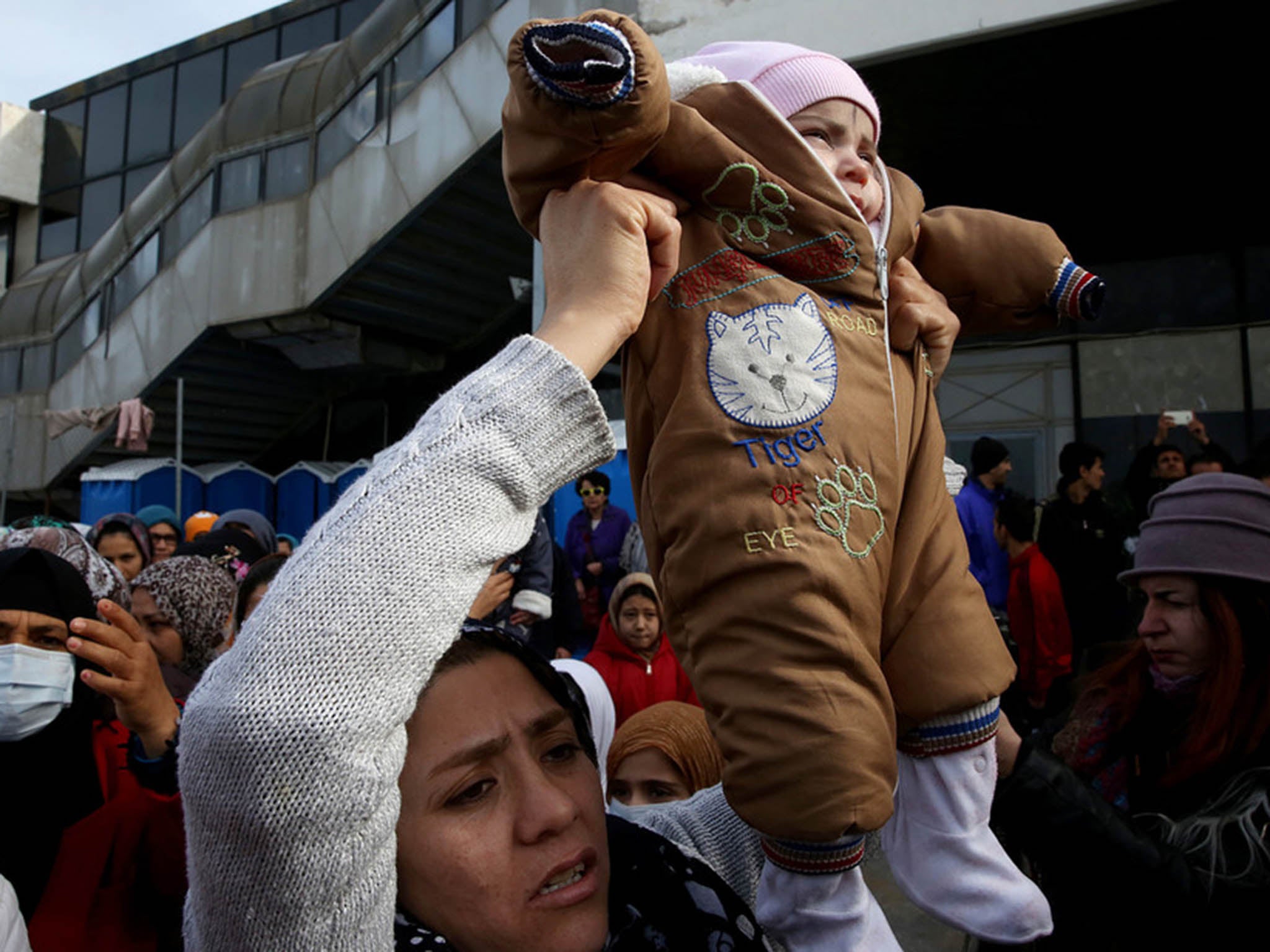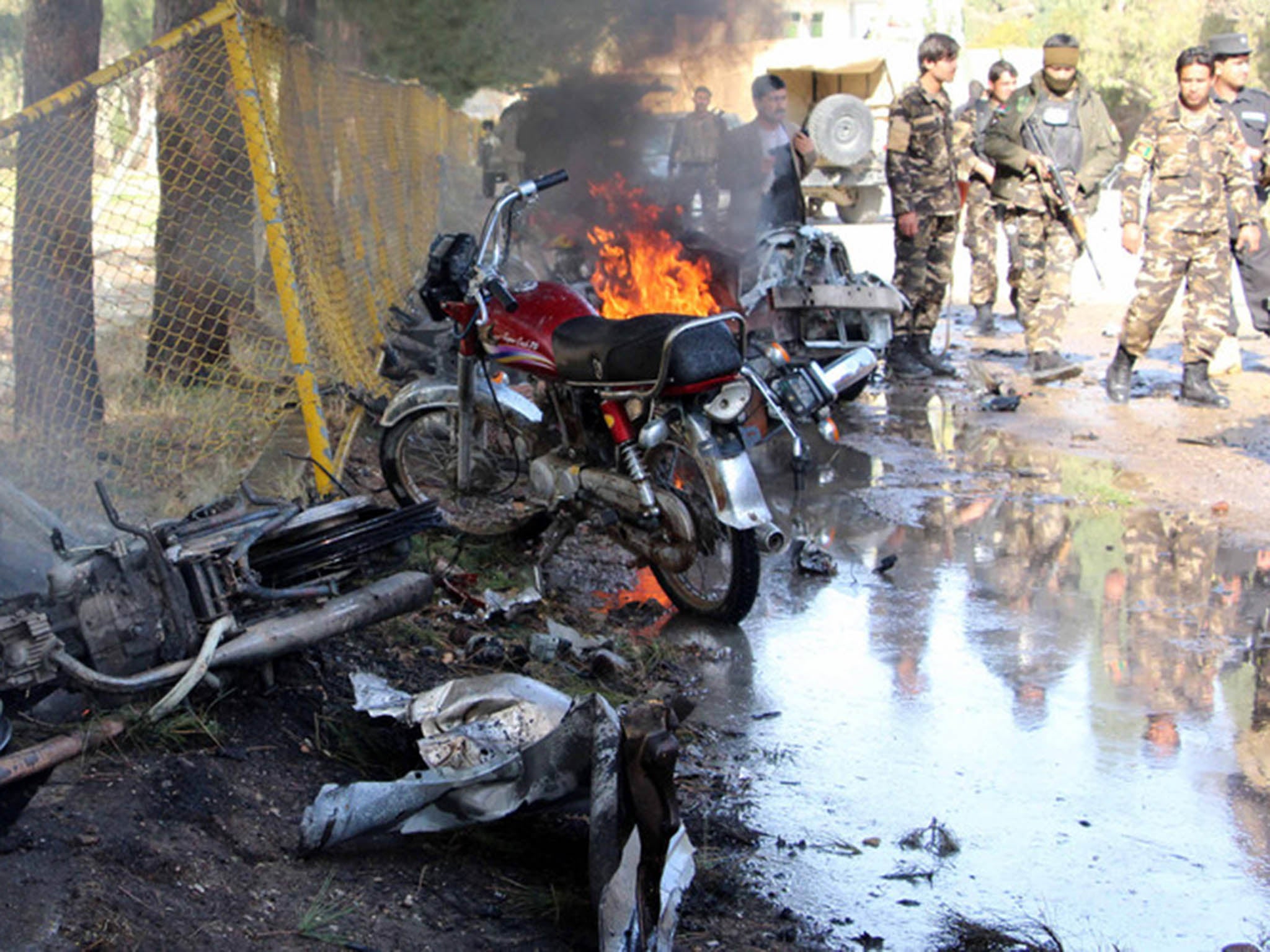How Afghans became second-class asylum seekers
There are double standards underlying the difficulties faced by Afghan asylum seekers in the West

Your support helps us to tell the story
From reproductive rights to climate change to Big Tech, The Independent is on the ground when the story is developing. Whether it's investigating the financials of Elon Musk's pro-Trump PAC or producing our latest documentary, 'The A Word', which shines a light on the American women fighting for reproductive rights, we know how important it is to parse out the facts from the messaging.
At such a critical moment in US history, we need reporters on the ground. Your donation allows us to keep sending journalists to speak to both sides of the story.
The Independent is trusted by Americans across the entire political spectrum. And unlike many other quality news outlets, we choose not to lock Americans out of our reporting and analysis with paywalls. We believe quality journalism should be available to everyone, paid for by those who can afford it.
Your support makes all the difference.When it comes to being a refugee, your nationality really matters. Syrian asylum seekers are routinely prioritised over Afghan ones in what has become a deadly and dangerous hierarchy for Afghans seeking sanctuary in the West.
I have witnessed this at first hand in interviews for my ongoing research on asylum policy. An executive officer at the Swedish Board of Migration told me that Syrian asylum applications, unlike Afghan ones, are “easier” to process, which explains why the asylum process is much longer for Afghans than it is for Syrians. That same officer indicated that the Swedish government asked the Board of Migration to prioritise “easy” cases. A source familiar with American refugee policy also explained to me that “the US chooses Syrians and Iraqis over Afghans”.
In 2015, there were 2.7 million Afghan refugees, the world’s second largest group after Syrians. Numbering 62,100 in 2016 in Europe, Afghans were also the second largest group of asylum seekers.
European migration agencies produce legally authoritative country guidance reports that assess the level of violence in a country. For the past decade or so these reports have consistently portrayed either all or some provinces of Afghanistan as “safe”. That assessment justifies deportations of Afghans, since internal migration to these “safe provinces” removes the threat of violence or persecution.
The insidious implication here is that many Afghans are not forced to leave their homes but are rather voluntary migrants. Yet while migration agencies make these assessments, foreign ministries of countries such as Sweden and the US deem all provinces of Afghanistan to be unsafe. These travel warnings are meant to guide citizens of Sweden and the US who are considering travelling to Afghanistan.
With double standards such as these it is no wonder that Afghan asylum seekers are seeing low approval rates and increasing deportation rates. In Sweden, for example, only a quarter of adult Afghan asylum seekers, and half of unaccompanied minors, were granted asylum in the first seven months of 2016. From 2012 to 2014 the number of Afghans granted asylum in the US was below 500 a year.
What are Afghans fleeing from?
Since 1979, Afghanistan has ranked between four and five out of five on the political terror scale, a measurement developed by political scientist Mark Gibney. Level five is the highest, interpreted as a condition where: “Terror has expanded to the whole population.” The mass flight of Afghans from their homes has occurred in the context of human rights abuses on a massive scale.
We are a long way from the Cold War-era when Afghan asylum seekers in the West were welcomed as heroes of anti-communism. The prospects of Afghan asylum seekers have worsened since 9/11. Since then, the number of Afghan asylum seekers to the US has drastically dropped as a result of policies influenced by the War on Terror that mistrust refugees from many Muslim countries.
But just like their Cold War counterparts, national asylum policies today differentiate Afghans based on group preferences and political agendas. A state will give a national or subnational group preferential treatment if it serves the interests of its foreign policy. In the 1980s, Afghan asylum seekers in the US obtained asylum more easily than other groups facing comparable persecution because they discredited communism. Today, they have a harder time than other groups fleeing from similar circumstances because they are associated with Islamist terrorism.
Such treatment seriously undermines the 1951 Refugee Convention and the 1967 Protocol on the status of refugees. But in the framework of the convention, individual states always have final say on refugee and asylum policy. Afghans have been downgraded from “first-class” asylum seekers during the Cold War to “second-class” ones during the War on Terror without breaking the convention.
But there is context here. It was Western powers led by the US and the UK who played a significant part in creating the conditions that forced Afghans to flee their country. The historian Robert D Crews writes that: “It is an overstatement to conclude that American policies led to the rise of the Taliban, but it is fair to say that the Mujahideen party leaders and their families who received US backing during the anti-Soviet jihad continue to dominate Afghan politics to this very day.”
In the aftermath of 9/11, he argues, the Americans “bear considerable responsibility” for the creation of the authoritarian and corrupt Afghan government, which is illegitimate in the eyes of many Afghans.

Yet, the US and other Western countries that sent troops to Afghanistan have placed the burden of responsibility for the mass exodus on internal Afghan affairs. Among the justifications invoked are pseudo-anthropological claims that Afghans are a tribal people prone to wage wars. By portraying Afghanistan as a war-torn country, Western states are evading welcoming its refugees.
The Afghan interpreters
The deprioritised status of Afghan asylum seekers is perhaps most glaring in the case of the Afghan interpreters who worked for Western governments. In 2009, the US created special immigrant visas for Afghans who were employed by or on behalf of the US government. Not a single visa was processed until 2011. A Human Rights First fact sheet states that the programme: “Was designed to provide 7,500 visas over five years. Extensions were passed in 2014 and 2015 that made 7,000 more visas available.” Many Afghan interpreters who worked for US forces remain in asylum limbo in Afghanistan.
The hesitation to admit Afghans who were directly persecuted because they worked for foreign governments is also found in countries such as Sweden, Britain and Germany. It was recently revealed, for example, that a lawyer from the Swedish Board of Migration attempted to influence a migration court to deny asylum to three Afghan interpreters. It remains unclear why the attorney attempted to discredit the asylum seekers, but her actions were deemed highly inappropriate by the Board of Migration.
The plight of Afghans shows that both international human rights as well as national asylum law can be shaped around specific groups of refugees and asylum seekers. When that happens, we see how contradictory political agendas can determine who receives priority in being granted asylum. Seen in this light, Donald Trump’s recent attempt to block all Syrian refugees from coming to the US may be extreme, but not surprising.
Admir Skodo, researcher in history, Lund University. This article first appeared on The Conversation (theconversation.com)
Subscribe to Independent Premium to bookmark this article
Want to bookmark your favourite articles and stories to read or reference later? Start your Independent Premium subscription today.
Join our commenting forum
Join thought-provoking conversations, follow other Independent readers and see their replies
Comments